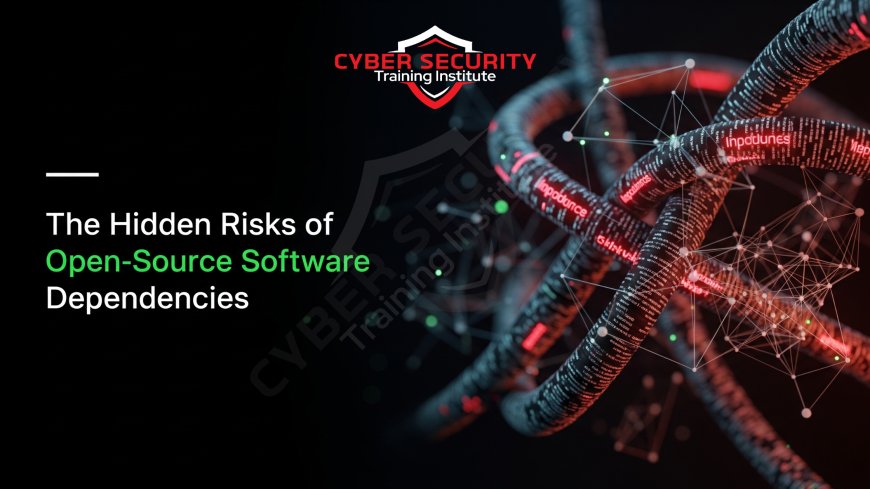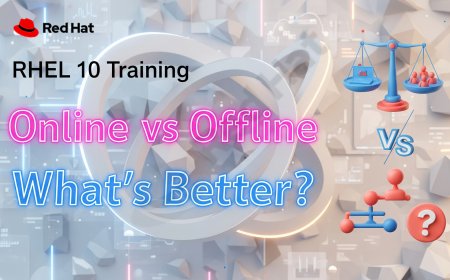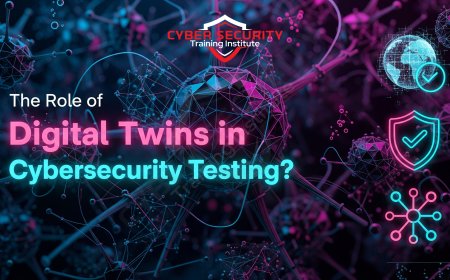The Hidden Risks of Open-Source Software Dependencies
Modern software is assembled, not built, relying on a vast global pantry of open-source components. This in-depth article explores the significant and often hidden cybersecurity risks that come with these open-source software dependencies. We break down the concept of the "dependency iceberg," where a handful of direct dependencies can pull in hundreds of unvetted, transitive dependencies, creating a massive and invisible attack surface. Discover the three primary categories of risk: the use of components with known, unpatched vulnerabilities (CVEs); the growing threat of intentionally malicious packages distributed via typosquatting and dependency confusion; and the complex legal and compliance minefield of open-source licensing. The piece features a comparative analysis that clearly distinguishes between these different types of open-source risks and the defensive tools required to counter them. We also explore the critical role that automated Software Composition Analysis (SCA) tools now play in providing the necessary visibility to manage this complex threat. This is an essential read for any developer, security professional, or business leader who needs to understand the full scope of the modern software supply chain and the steps required to secure it.

Introduction: The Modern Software Assembly Line
Modern software is not built from scratch; it's assembled. Developers today are like master chefs who, instead of growing every single ingredient, select the best pre-made components from a vast, global pantry of open-source software. This approach has accelerated innovation at an incredible pace. But what if one of those trusted, pre-made ingredients is secretly poisoned? This is the core of the hidden risk of open-source software dependencies. The very practice that makes modern development so fast and powerful has also created a massive, often invisible, and largely unmanaged attack surface. Businesses are now facing widespread vulnerabilities, targeted supply chain attacks, and complex licensing issues that can undermine their security and threaten their core intellectual property, all because of a component they didn't even know they were using.
The "Dependency Iceberg": What You See vs. What You Get
The first and most critical risk to understand is the concept of the "dependency iceberg." When a software developer adds a piece of open-source code to their project—for example, a library to handle a specific function—that is a "direct dependency." A developer might look at their project and say they are only using 10 or 15 open-source components.
But the reality is far more complex. Each of those 10 direct dependencies has its own set of dependencies. And those dependencies have their own dependencies, and so on, creating a long and complex chain. These are known as "transitive dependencies." The 10 libraries the developer knowingly added are just the tip of the iceberg. Below the surface, their project might actually be pulling in hundreds or even thousands of other, completely unknown packages from a huge number of different authors.
This creates the primary risk: a single security vulnerability in a tiny, obscure package, buried four or five layers deep in your dependency chain, is now a direct vulnerability in your own application. You are inheriting the risk of every single one of these hidden, unvetted components. .
The Known and the Unknown: Vulnerability Risks
The most common and well-understood risk in the open-source supply chain is the threat of known vulnerabilities. An open-source component, like any piece of software, can have bugs and security flaws. When a serious flaw is discovered, it is publicly disclosed and given a CVE (Common Vulnerabilities and Exposures) number.
The infamous Log4j vulnerability was a perfect example of this. A flaw was discovered in a hugely popular, but often hidden, Java logging library. This sent companies all over the world scrambling to figure out if any of their thousands of applications were using this vulnerable component, either directly or as a transitive dependency. The core challenge is scale. Without an automated tool, it is impossible for an organization to manually track the vulnerability status of the thousands of transitive dependencies that are hidden in their software. This means that many applications are running with known, exploitable vulnerabilities that the company is completely unaware of.
The Malicious Actor: When the Dependency Is the Attack
An even more dangerous threat is when the open-source component isn't just accidentally buggy, but is intentionally malicious. Attackers are now targeting the open-source repositories themselves to try and trick developers into installing malware. They use several clever techniques:
- Typosquatting: An attacker will upload a malicious package to a public repository (like npm for JavaScript or PyPI for Python) with a name that is a common misspelling of a popular, legitimate package. They hope a developer will make a typo during installation (`pip install colourful_lib` instead of `pip install colorful_lib`) and accidentally install their malware.
- Dependency Confusion: This is a more sophisticated attack. An attacker discovers the name of a *private*, internal package that a company uses. They then publish a malicious public package with the exact same name. The company's automated software build tools can then get "confused" and pull the malicious public version instead of the safe, internal one.
- Maintainer Account Takeover: Attackers will use phishing attacks to try and steal the login credentials of the legitimate, trusted maintainers of a popular open-source project. If they are successful, they can use this trusted account to publish a new, malicious version of the package. This is particularly dangerous, as it will be downloaded automatically by thousands of developers and build systems that are configured to trust that specific package.
The Legal Minefield: The Risks of Open-Source Licensing
Beyond the technical risks, there is another, equally dangerous risk that is often overlooked: legal and compliance risk from software licenses. Open-source software is not "free" in the sense of having no rules. Every single open-source component is governed by a license that dictates how it can be used.
These licenses can be broadly categorized into two types:
- Permissive Licenses (e.g., MIT, Apache): These licenses are very simple. They generally allow you to use the code freely in your own projects with very few restrictions.
- Copyleft Licenses (e.g., GPL): These licenses are "viral." They are designed to protect the freedom of the software. They often have a key requirement: if you create a larger work that *uses* the GPL-licensed component, then your entire work must also be made open-source under the same GPL license.
This creates a massive potential risk for any company that builds proprietary, commercial software. A developer might unknowingly use a single, small component with a restrictive "copyleft" license that was buried deep in the transitive dependency chain. This could legally obligate the company to release the entire source code of their valuable, proprietary, commercial application to the public. This is a catastrophic risk to a company's intellectual property.
Comparative Analysis: Types of Open-Source Risks
The risks from the software supply chain are diverse, ranging from accidental flaws and intentional attacks to serious legal and compliance issues.
| Risk Type | Description of the Risk | Primary Threat | Key Defensive Tool |
|---|---|---|---|
| Known Vulnerabilities (CVEs) | Using a specific version of a legitimate open-source component that has a publicly disclosed security flaw. | An external attacker exploiting a known bug to compromise your application. | Software Composition Analysis (SCA) with vulnerability scanning, and a rapid patching process. |
| Malicious Packages | Unknowingly using a software package that was intentionally designed to be malicious from the start (e.g., via typosquatting or a compromised maintainer). | A direct compromise of your systems via malware that you have willingly installed. | Using trusted repositories, developer vigilance, and advanced SCA tools that can detect suspicious packages. |
| Licensing Risks | Unknowingly using a component with a restrictive "copyleft" (e.g., GPL) license within a proprietary, commercial software product. | A legal and compliance risk that could force you to release your proprietary source code to the public. | SCA with integrated license scanning, and strong internal policies for developers on approved licenses. |
Conclusion: A Mandate for Visibility and Automation
The use of open-source software is an indispensable and powerful accelerator for modern software development. But it comes with a complex and often hidden set of risks. The "dependency iceberg" means that your application's true attack surface is far larger and more complex than you probably think. You are not just responsible for the security of the code your team writes; you are responsible for the security of every single one of the thousands of ingredients that go into your final product.
It is impossible to manage this risk manually. The only viable solution is to use automated Software Composition Analysis (SCA) tools. These tools are the essential "ingredient scanners" for your software. They can automatically scan your codebase, identify all of your direct and transitive dependencies, check them against a massive database of known vulnerabilities, and even identify the license of every component to alert you to legal risks. In the modern world of assembled software, you can't secure what you can't see. SCA tools provide that critical visibility.
Frequently Asked Questions
What is open-source software?
Open-source software is software with source code that anyone can inspect, modify, and enhance. It is developed in a collaborative, public manner.
What is a "dependency"?
In software development, a dependency is a third-party piece of code, like a library or a package, that your application needs in order to function.
What is a "transitive dependency"?
A transitive dependency is an indirect dependency. If your project depends on Library A, and Library A depends on Library B, then Library B is a transitive dependency of your project.
What was the Log4j vulnerability?
The Log4j vulnerability was a critical, zero-day flaw discovered in a very popular open-source Java logging library. It was a classic supply chain issue, as thousands of applications were vulnerable because they used this library as a dependency.
What is "typosquatting"?
Typosquatting is an attack where a criminal uploads a malicious package to a public repository with a name that is a common misspelling of a popular, legitimate package, hoping a developer makes a typo and accidentally installs it.
What is dependency confusion?
Dependency confusion is an attack where a hacker discovers the name of a private, internal package that a company uses. They then publish a malicious public package with the exact same name, which can trick a company's automated build tools into downloading it instead.
What is a "copyleft" license?
A copyleft license (like the GPL) is a type of open-source license that requires any derivative works to be distributed under the same license. This can be a major legal risk for companies building proprietary software.
What is a Software Composition Analysis (SCA) tool?
An SCA tool is an automated security tool that is designed to scan an application's codebase to create a full inventory of all its open-source components and to check them for any known security vulnerabilities or license issues.
What is an SBOM?
An SBOM, or Software Bill of Materials, is a formal, machine-readable inventory of all the software components and dependencies that are included in an application. SCA tools are used to generate an SBOM.
What are npm and PyPI?
They are public software repositories. npm is the default package manager and repository for the JavaScript programming language, and PyPI (the Python Package Index) is the official repository for Python.
What is a "package manager"?
A package manager is a tool that automates the process of installing, updating, and managing the software libraries and dependencies for a project.
What is a CVE?
CVE stands for Common Vulnerabilities and Exposures. It is a system that provides a unique, common identifier for a publicly known cybersecurity vulnerability.
How can a developer's account be taken over?
Through standard hacking techniques, most commonly a phishing attack that tricks the open-source project maintainer into giving up their username and password for the software repository.
What is a "viral" license?
This is a common, informal term for a strong "copyleft" license like the GPL. It's called "viral" because its open-source requirements can spread from a small component to the entire larger software project that it is a part of.
What is a "false positive" in an SCA scan?
A false positive is when an SCA tool incorrectly flags a piece of code as being vulnerable when it is not. This can happen, but modern SCA tools have very high accuracy rates.
What is a "dependency tree"?
A dependency tree is a visualization of all the direct and transitive dependencies in a project, showing how they are all connected. This is often used to visualize the "dependency iceberg."
What does "proprietary" software mean?
Proprietary software is closed-source software. The public does not have access to the source code, and it is the private intellectual property of the company that created it.
Is open-source less secure than commercial software?
Not necessarily. Open-source software can be very secure because its code is open to be scrutinized by thousands of developers and security researchers. The risk comes from the sheer scale and complexity of managing the dependencies.
What is a "repository"?
A repository is a central place where data, in this case, software packages, is stored and maintained. GitHub, npm, and PyPI are all examples of software repositories.
What is the number one thing a company can do to manage this risk?
The number one thing is to implement an automated Software Composition Analysis (SCA) tool into their software development lifecycle. You cannot manage a risk that you cannot see, and SCA provides the necessary visibility.
What's Your Reaction?
 Like
0
Like
0
 Dislike
0
Dislike
0
 Love
0
Love
0
 Funny
0
Funny
0
 Angry
0
Angry
0
 Sad
0
Sad
0
 Wow
0
Wow
0















